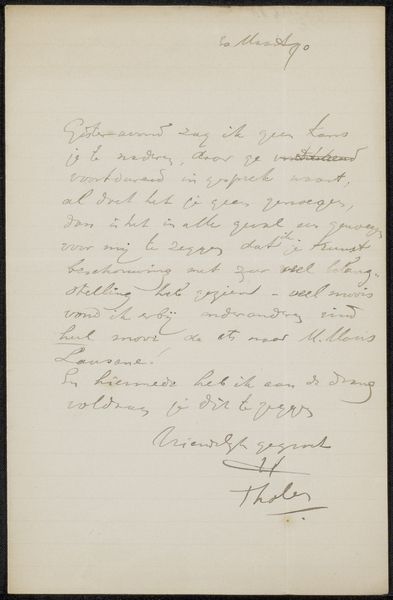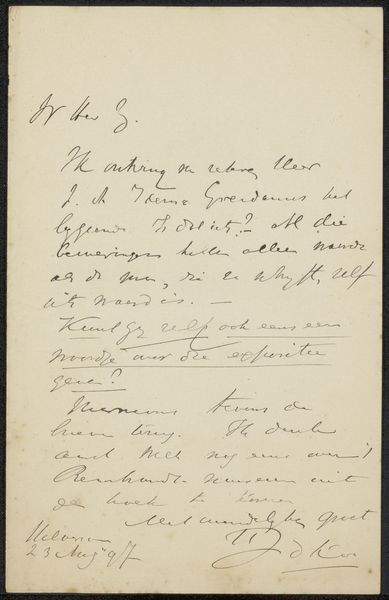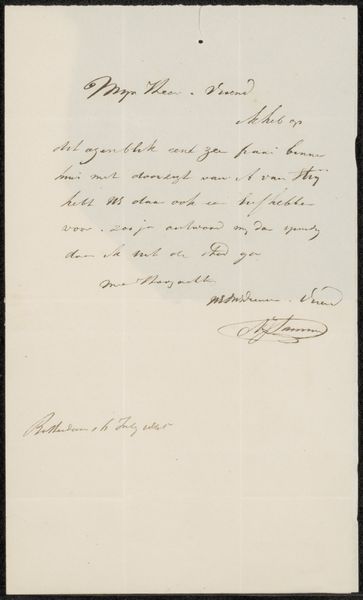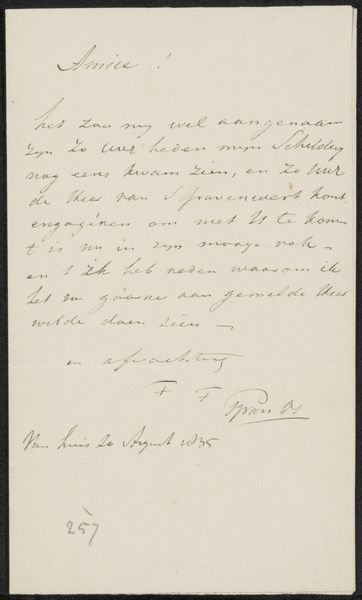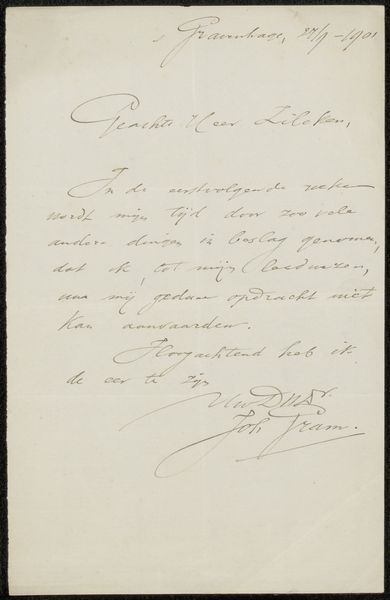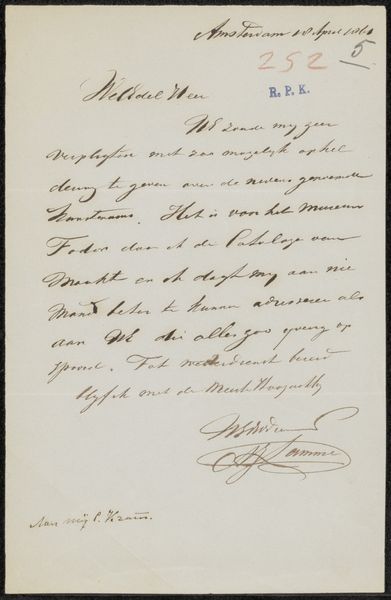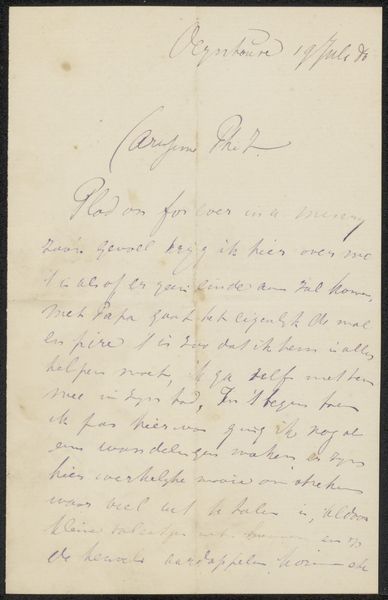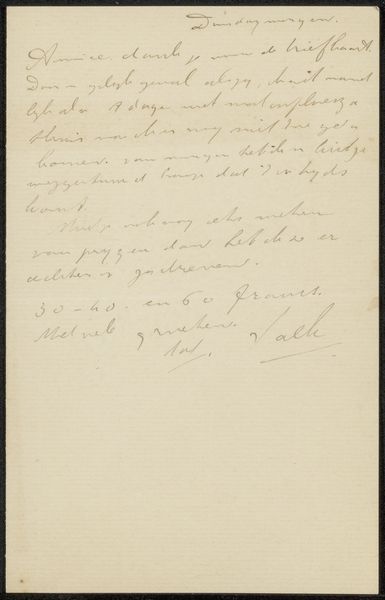
Copyright: Rijks Museum: Open Domain
Curator: Today we're looking at "Brief aan Philip Zilcken" by Ferdinand Hart Nibbrig. This piece, dating possibly from 1901 to 1924, is executed in ink, using both pen and drawing techniques. Editor: It strikes me immediately as delicate and ephemeral. The handwriting, while faded in areas, conveys a real sense of intimacy. Curator: Indeed. The materiality speaks to its creation. Consider the paper itself: its quality, its aging, and how they reflect the availability of resources during the period, along with how it speaks to Nibbrig's relationship with his subject. Correspondence was a significant element in artistic and intellectual communities. Editor: The flowing lines of the pen work remind us of calligraphy; however, they seem more driven by impulse, less rigid and precise. There’s a looseness of execution, which perhaps mirrors the casual tone between two colleagues? Curator: Possibly. These works existed within a social fabric. Who were these individuals? What positions did they occupy in the artistic establishment? What sort of consumption practices supported or were supported by it? And is this meant to be high art, or an ancillary element, such as ephemera used in daily life, made by and disseminated within his workshop? Editor: Regardless of whether it was meant to be private or meant to be disseminated in any public manner, I see evidence of emotion primarily: perhaps it's excitement, eagerness or it could equally have been intended to convey seriousness in their exchange, but regardless there's some level of engagement at work. I think of how it resonates visually more so. The placement of the words on the page creates an asymmetrical design. Curator: I concede there is visual engagement, but it needs to be interrogated further within the relevant networks that constituted the artistic system. These processes directly affected the artworks, like how it was sold, reproduced or regarded. These papers may hold invaluable insights. Editor: It really has you consider just how layered these types of 'smaller' works can be, doesn't it? Curator: Precisely! Material conditions are always central when it comes to understanding artwork.
Comments
No comments
Be the first to comment and join the conversation on the ultimate creative platform.
